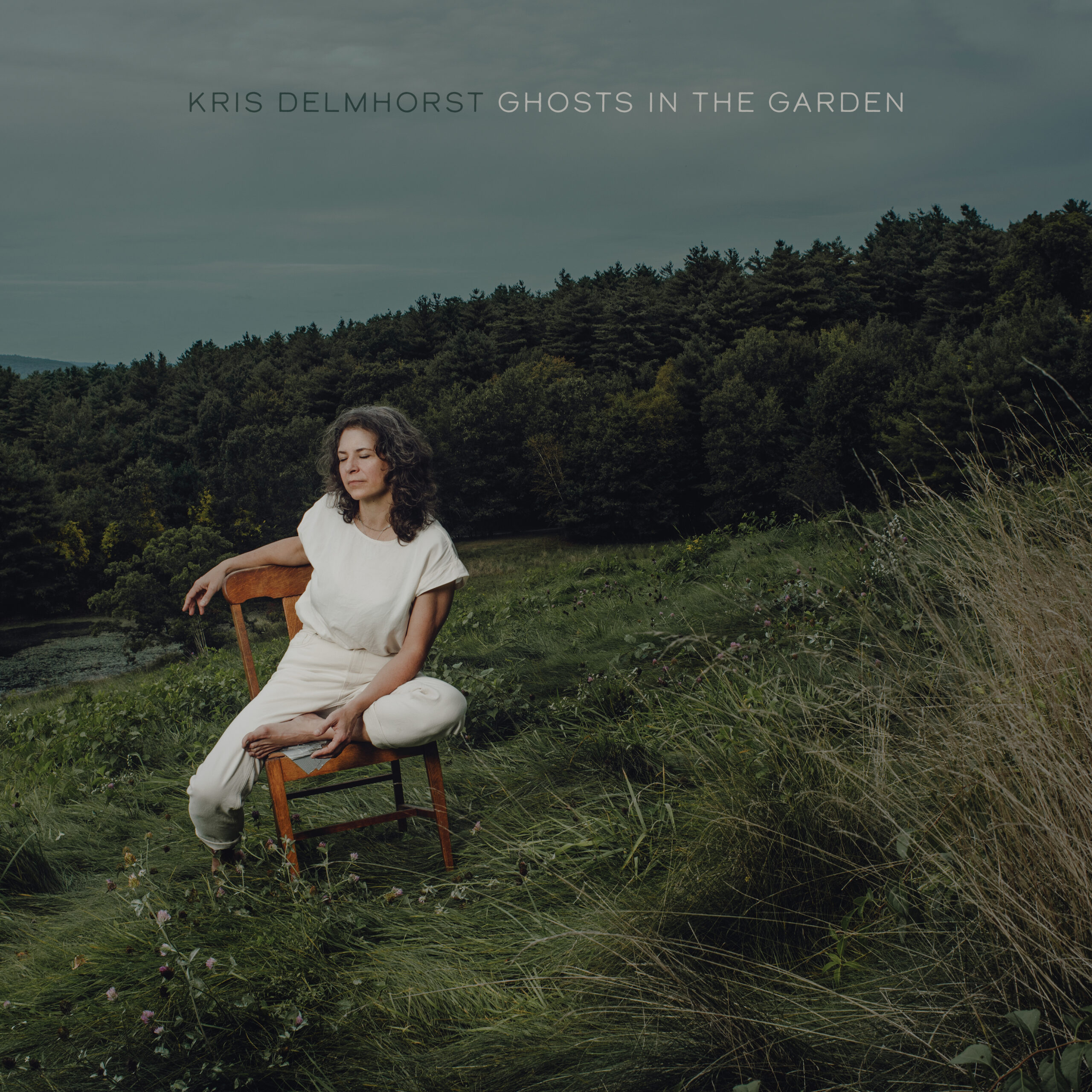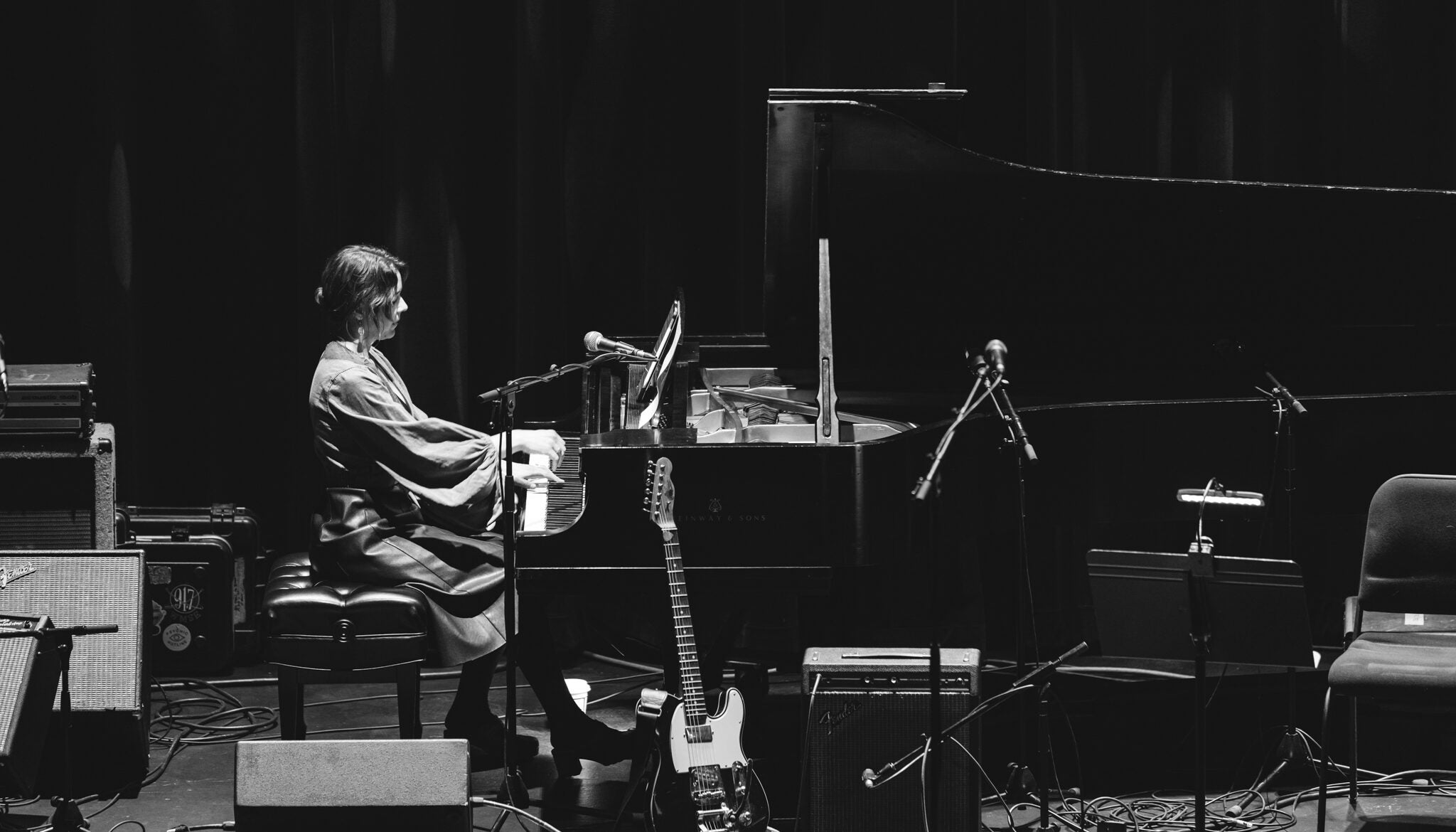Kris Delmhorst is a singer-songwriter who likes challenging art. Her songs are explorations into life, love, death and the road not taken that give the listener just enough unsaid to find their own understanding of the words.
We here at WPR’s “BETA” love great, challenging music — and that is what Delmhorst has shared with us on her fifth studio album, “Ghosts in the Garden.” She took some time to talk with us while a blizzard raged outside her Massachusetts home.
The following was edited for clarity and brevity.
Stay informed on the latest news
Sign up for WPR’s email newsletter.
Steve Gotcher: Your new album is called “Ghosts in the Garden,” and a few songs on this record mention ghosts and gardens. Tell me about the name of the record and why you wanted to use that kind of imagery.
Kris Delmhorst: What these songs have in common is that they’re all talking about invisible layers of existence. They’re talking about the past or the dead, or the sort of roads not taken in your life, or they’re talking about your visions or worries for the future.
To me, the garden in the title is the tangible physical present, and the ghosts are all these other layers of existence that are very much with us all the time but invisible.

SG: The album’s vibe seems somewhat solemn, and you’ve said there’s a lot of grief, loss and change in the record. Did that naturally happen as you were writing or was it intentional?
KD: Well, the songs come from whatever’s happening inside my head, heart and life. And I’m not someone who ever sits down or hardly ever sits down to write a song about something. That, for me, is the surest way to shut down anything interesting happening.
I usually start with a little piece of something, a little line of words and music that bothers me and does not leave me alone. I don’t know what it’s about or even where it originated. And I’ll build the song out from that. The writing of the song is a discernment process.
I think of it like an X-ray that shows what’s going on. Writing a song and figuring out what’s on my mind at that time is revelatory.
The fact is there were some literal deaths in my life, but then also there’s worry about the way the world is going right now. I’m at a point in my life where my parents are getting older, my kid is getting older and there are a lot of chapter changes in that kind of stuff. I think the fact that all these songs came out is just an expression of where I’m at.
SG: The first song you released from the record is “Something to Show.” And you had me right away with the ethereal sound and the wonderful Rhodes keyboard, which I love so much, and you played it so fine on that song. Why was that the first song that you wanted to share from the album?
KD: It’s the last song on the album, which is not the typical thing that people do with singles, but I was trying to choose a song that would be kind of representative of the whole family of the album and not be too far out on the fringe of it.
It’s kind of an insomnia song. It’s a song about lying awake in the middle of the night and worrying about all the stuff, whatever you’re worried about. And the song is hoping that all of that struggle will get you somewhere.
SG: Another song on the record is “Lucky River,” with Anaïs Mitchell of Bonny Light Horseman and Hadestown fame singing the background vocals. How is it working with Anaïs?
KD: It was great. I’ve known Anaïs for a long time, and she is such a magical person and musician. There’s a different guest singer on almost every track on the album.
We recorded live with the band in the studio, and I was listening to the rough mixes straight from the studio on a late-night drive. And I had this experience where each song as it came by, I heard a person singing on it, like a specific voice, and so clearly, like they were sitting in the shotgun seat of the car with me. I could just hear it.
I hadn’t considered bringing in guest singers on this record. I was just going to cover whatever harmonies needed to happen myself. But as soon as I got home that night, I wrote down all those names and started calling people. I felt like the songs almost requested these people, and then I just went out and got them. I was fortunate that everyone was up for doing it.
That song is one of my favorites on the record and one of the ones I’m proudest of writing. It’s a very restrained and slow song. And then there’s this burst of emotion at the end, and Anaïs’ voice is so unbearably emotive. It made that song grow beyond where I ever could have imagined.
SG: I found the lyrics to “Beyond the Boundaries” quite compelling. In it, you sing, “Well, doesn’t it feel like a terrible crime to be prisoners to the boundaries of space and of time.” How do you think people are prisoners of space and time?
KD: Well, the most literal level of that song is, it’s a wartime, star-crossed lovers kind of song, where it’s people that meet and fall in love and are quickly torn apart and not available to each other.
It’s a very classic story. In that song, there’s your little reality that you’re in, and that has its limitations. Whatever they are like, you’ve made them. So, there’s a kaleidoscope version of your life. And then there’s the snapshot version of your life where this is you and your moment, and this is what’s happening. But then, even if it isn’t possible or never happened or never will happen, it’s still kind of a part of your life and your conception of it.
SG: Yeah, I like that. In 2011, you recorded an album of songs by The Cars. That must have been quite a fun project. What inspired you to do that record?
KD: That record was something I thought about for so long. I would tell my friends about it, and they would just roll their eyes at me. I don’t think anyone thought I was really going to do it. But I thought about it for years and years. And the story with that record, which is true, is I had a dream where Ric Ocasek — I met him at a party, and I told him about the idea, and he loved it. And he brought me home and he got Paulina Porizkova to make me a sandwich. And then I woke up. I said, OK, we’re doing it.
We were all in the studio, sitting in a circle playing live with no overdubs, just playing those great songs. That one was just pure joy for all of us who were making it. We played a handful of shows with the whole band, and it was just unadulterated joy for everybody — such a treat.
SG: Music Box Online said this about you, and I think this is a great quote. It says, “Delmhorst has become a favorite among music fans who like to be challenged as well as entertained.” This is precisely why I like your music so much. I’m curious how you think you challenge listeners. Is that your intent, or is it just how it came out?
KD: I don’t know if it’s my intent, but it is what I love about any art. I like to be left with some questions. I don’t want it to be sewn right up with no loose ends. Any piece of music or art or writing with mystery also applies to things that I write. I’m not very interested if I understand exactly what’s going on there.
That’s why I try to blindfold the very conscious, analytic parts of my mind that come up with things I already understand. That’s not what I’m looking for. I look for things I don’t quite understand when writing a song.
The songs that have the most staying power for me, in terms of staying interested in them, are the ones where I still haven’t exactly figured out everything that’s going on, like there are still things for me to work on. Even if it’s just like a pop song that feels great, I still like it best if there’s something in there that’s referring to something a little bit less cut and dried, something where there’s a little bit to think about.





